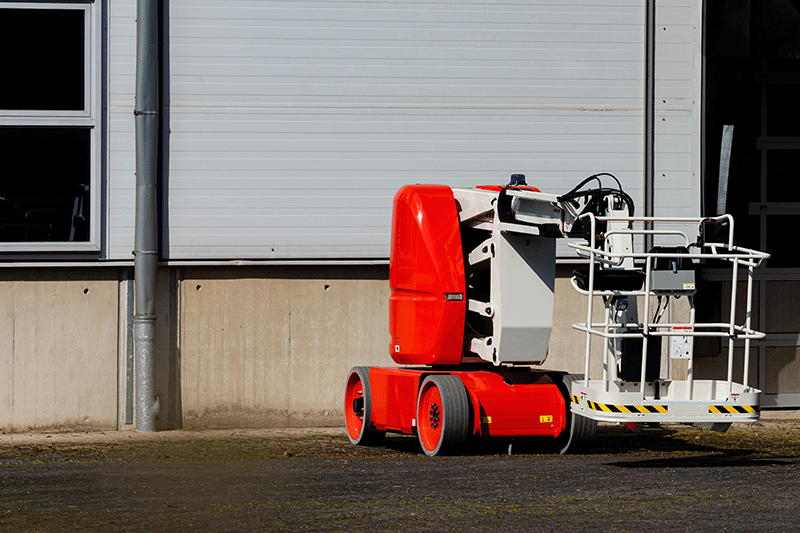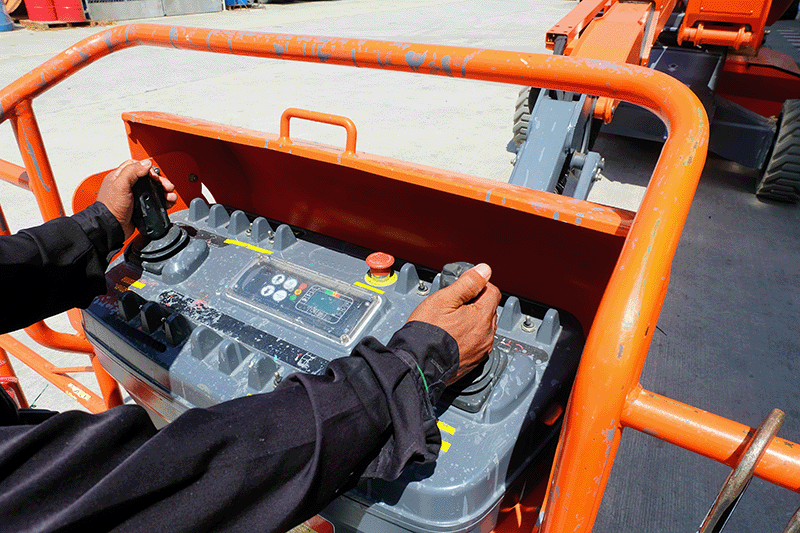Partner with Downstream

When you’re working solo at height—whether it’s in a warehouse, a commercial facility, or during routine maintenance—the One-Person Lift (also called a One Man Lift) is your go-to machine. Compact, lightweight, and easy to maneuver, these lifts are designed to get you up and down quickly and safely without needing a crew to operate them. However, choosing the right model isn’t always straightforward. You need to size it for your specific environment, weight capacity, and lift height. Underestimating or overestimating these factors can cost you in productivity, rental spend, and potentially safety. This guide breaks down how to size a One-Person Lift based on your application, with real-world examples to make the decision easier.

A One-Person Lift is a compact aerial work platform that lifts a single worker and their tools vertically to complete elevated tasks. They’re common in indoor settings or light-duty outdoor projects where space, weight, and maneuverability are priorities.
There are a few main types: push-around vertical mast lifts, self-propelled vertical mast lifts, and personnel lifts with stabilizers or outriggers for added safety.
Height:
You’ll need to think about both platform height and working height. Platform height is how far the lift itself reaches, while working height is generally about six feet higher—assuming the worker is standing on the platform. For example, a 12-foot platform height gives you an 18-foot working height, while a 20-foot platform height gives you about 26 feet of working height.
If you’re changing lights in a gymnasium that are mounted at 28 feet, a 20-foot platform height won’t be enough. You’d need a 26–32 foot lift to safely get the job done without stretching or unsafe positioning.
Weight Capacity:
Most One Man Lifts are rated for 300–350 pounds, enough for one worker plus light tools. If you’re carrying heavier equipment, make sure the total load—including your own body weight—stays under the manufacturer’s rating. Even going over by 10 pounds can compromise safety and potentially void rental agreements.

For indoor maintenance in offices or commercial spaces, 12–20 foot push-around or self-propelled lifts are a good fit. These spaces often have low ceilings, sensitive flooring, and narrow hallways, so compact designs that can fit in elevators and through standard doorways are best.
For retail stores and warehouses, 20–26 foot One Man Lifts with non-marking tires work well. These environments often have tall shelving or lighting, and workers need to move between aisles efficiently.
For hospitality and event venues, 26–32 foot push-around lifts are ideal. These locations may have vaulted ceilings or high lighting rigs where taller reach is critical, but maneuverability is still important. A convention center AV technician, for example, might use a 32-foot lift to adjust spotlight rigs above a ballroom before an event—something a wider scissor lift couldn’t handle in a narrow access hallway.
Doorway and elevator access can be a limiting factor. If you need to move the lift to upper floors, look for units less than 30 inches wide and under 80 inches tall in their stowed position. Weight also matters—push-around units can weigh anywhere from 600 to 1,000 pounds.
Power source is another factor. Battery-powered lifts are standard for indoor work because they produce no emissions and run quietly. For outdoor or long-duty cycles, plug-in AC-powered models may be the better option if power outlets are accessible.
Whether you need a compact 12-foot push-around lift or a 32-foot vertical mast for high-reach work, Downstream has you covered. With a nationwide network of rental partners and real-time availability, you can browse and reserve the exact model you need without the back-and-forth hassle.
Explore One-Person Lift options at Downstream and get the right size delivered directly to your job site.
One-Person Lifts may seem simple, but choosing the wrong size can disrupt schedules, raise costs, and increase safety risks. Always think about your working height needs, total load weight, and site access limitations before you book.
If you’re unsure, consult manufacturer specifications from trusted brands like Genie or JLG, or work directly with a knowledgeable rental provider to ensure you’re getting the right lift for the job.
-min.webp)
Quis nostrud exercitation ullamco laboris nisi ut aliquip ex ea commodo consequat. Duis aute irure dolor in voluptate.
